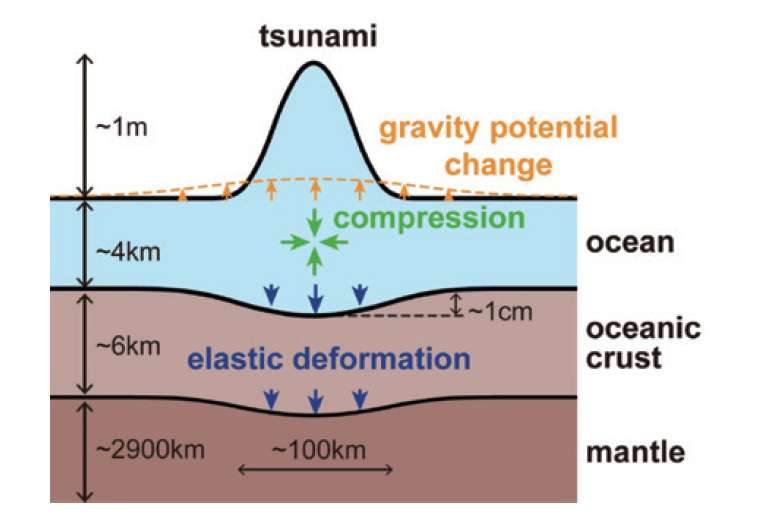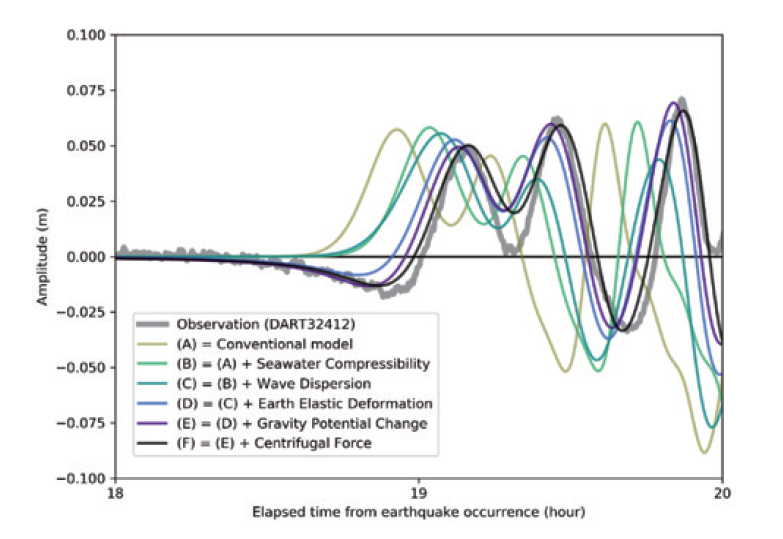Major Research Development of an ocean-earth coupling model for tsunami propagation
To accurately predict tsunami propagation on the earth, we should take the following effects into account: effects of wave dispersion which decreases the phase velocity of short-wavelength component, effects of seawater compressibility which decreases the one of all wavelength components uniformly, and effects of earth's elasticity and gravity potential change that decrease long-wavelength component. We developed a new numerical tsunami model. The model can consider all those effects by coupling the ocean and the solid earth. The prediction accuracy of far-field tsunami is much improved by the new model.
We applied the model to the 2011 Great East Japan Earthquake tsunami. By comparison to the conventional model, significant improvement of the model accuracy is confirmed in waveform prediction even in far fields.
Hereafter, we are trying to increase the resolution of bathymetry in the global tsunami propagation model. Further improvements of the model accuracy is expected. We are going to integrate the ocean-earth coupling model with the existing tsunami-simulator STOC and utilize it to predict inundation in coastal areas.

Effects of seawater compressibility and earth elasticity on tsunami propagation

Wave forms of the 2011 Great East Japan Earthquake tsunami observed off the coast of Peru



